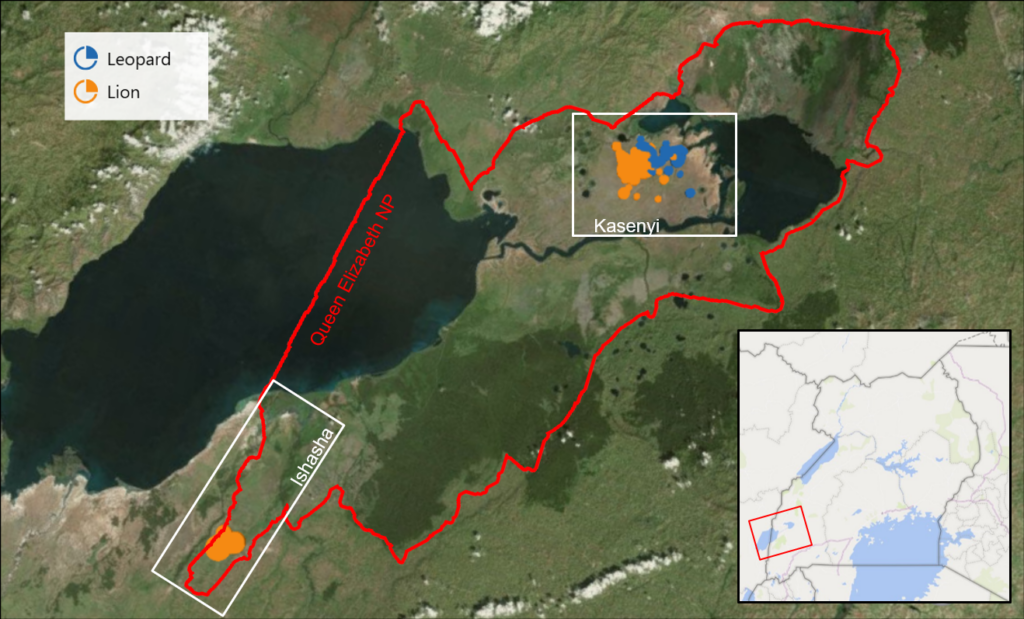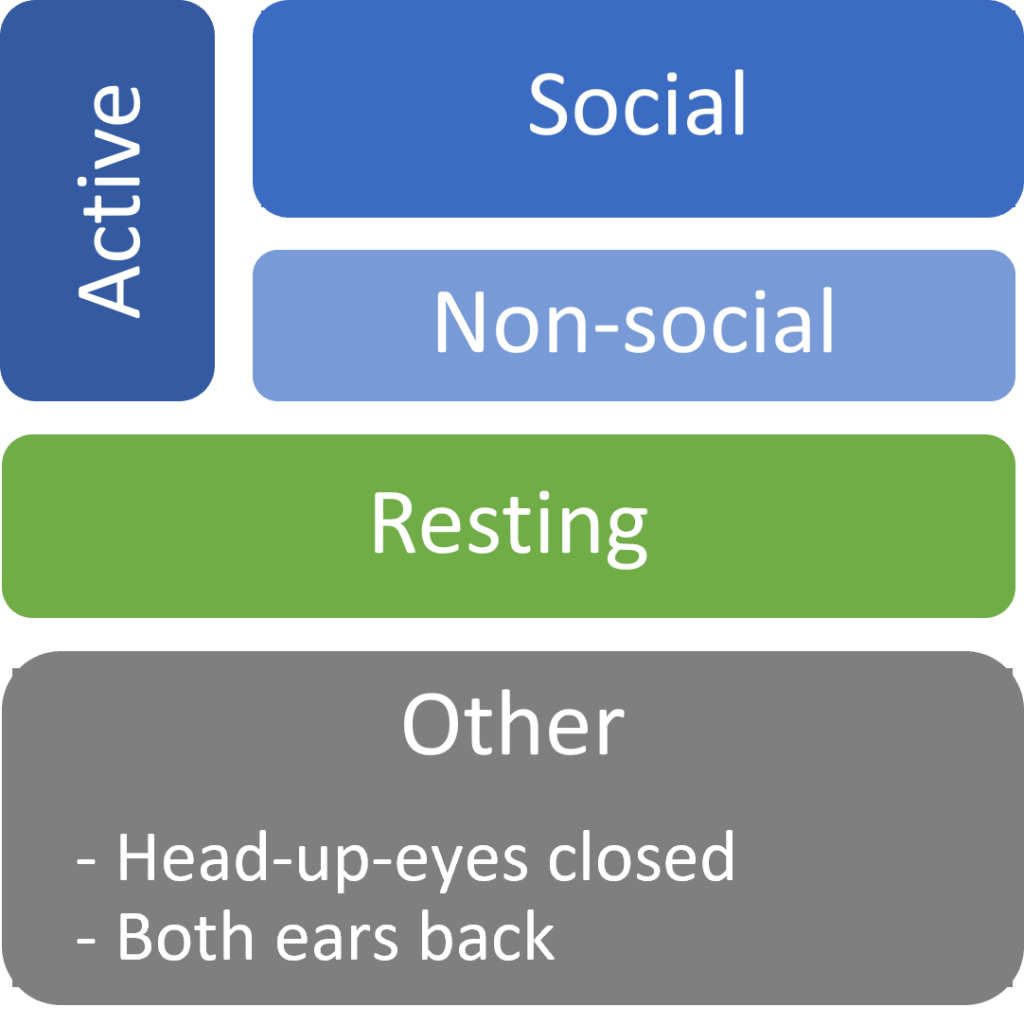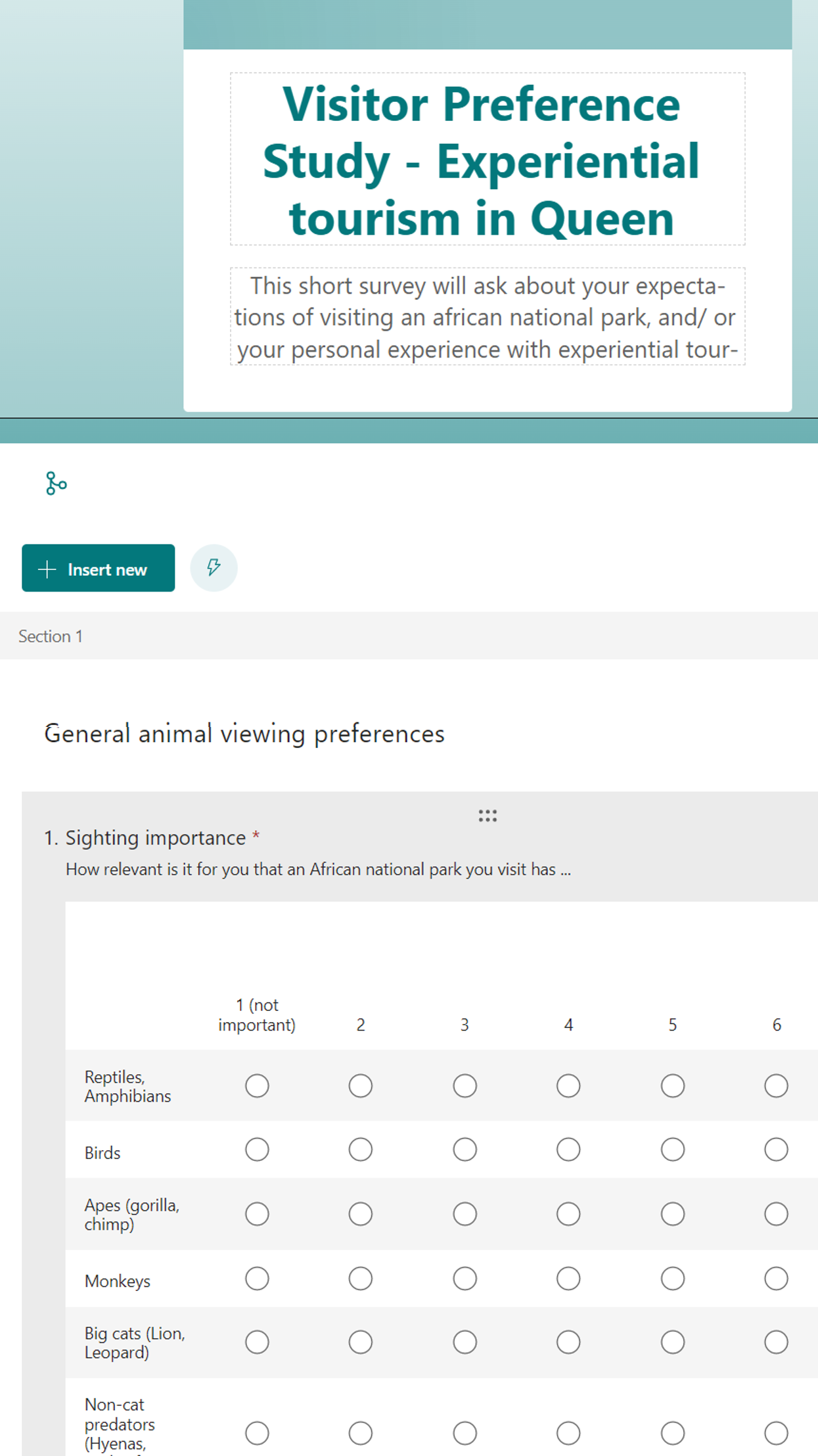
Behavioural data from 18 lions and 5 leopards was gathered in Queen Elizabeth NP over a 4-month period. Tourism impact during the observations was noted using the three variables noise level, proximity of cars and number of cars.
Additionally, an online survey with 108 participants was conducted to determine expectations of visitors to an African safari and, in case they took part in the “Experiential Tourism” programme offered by the Uganda Carnivore Program (UCP), their feedback on that programme.
Behavioural Data
Behavioural data on the lions and leopards was collected using an ethogram with 32 behaviours in 4 categories. The majority of data was gathered during the “Experiential Tourism” program offered by the UCP, where tourists are able to join professional trackers and scientists on their almost-daily trips to collared cats.
Data collection mostly took place in the Kasenyi region of Queen Elizabeth NP. Kasenyi is the home range of the two leopardesses and the 14-lions strong “Kasenyi pride” that were the main study animals. Two more collared lionesses from the Ishasha region and two uncollared lions and three leopards also roaming the kasenyi area added to the data set.

The four behavioural categories were “Active”, “Social”, “Resting” and “Other”. From the “Other” category, the two behaviours “ears-back” and “Head-up-eyes-closed (HUEC)” were tested separately. Additionally, the location of the cat, i.e. if it was on the ground or in a tree, was noted. For lions, the distance to their closest conspecific was also noted, since they are very social and might therefore increasingly look for social support when in distress.

For statistical analysis, the three visitor-related parameters (number & proximity of cars, noise level) were tested against each of the behaviour categories (active, social, resting, location, ears-back, HUEC).
Online visitor survey

The online visitor study was comprised of 20 questions, subdivided into (1) general animal viewing preferences and (2) expectations of an ExT program (+ experience with the program, if the person was a participant in the ExT). Its aim was to determine preferences for certain safari aspects and the willingness to adhere to certain guidelines that might lower negative impacts on the big cats.
Data from the visitor study was mostly analysed using descriptive statistics.